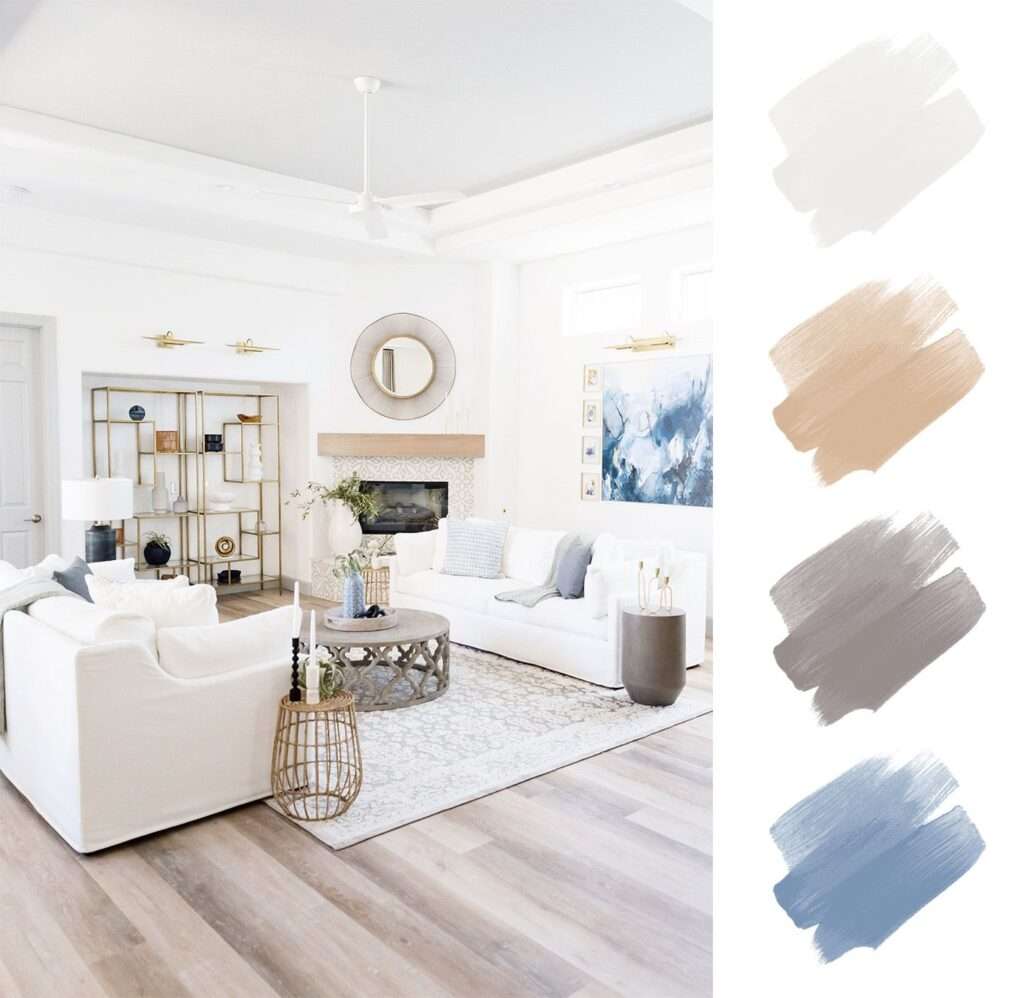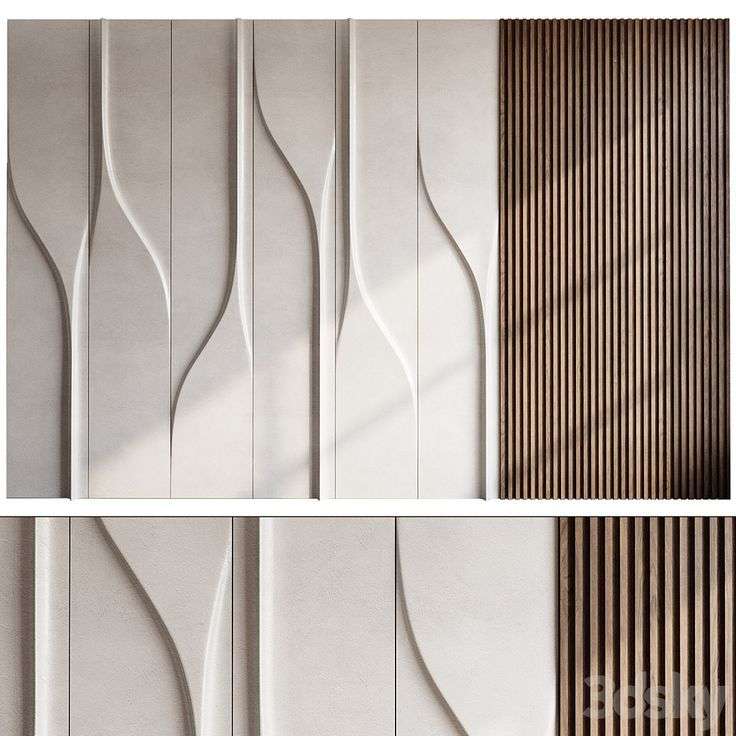Neutral colors have long been a staple in interior design, providing a sophisticated backdrop that complements any style. Whether it’s soft beige, warm taupe, cool gray, or crisp white, neutrals create a calm, inviting atmosphere in a room. However, one common challenge with neutrals is the risk of making a space feel flat, dull, or lifeless.
At Scale & Structure, we understand that neutrals can be both versatile and dynamic when used correctly. In this guide, we’ll share tips on how to use neutral colors in your home without sacrificing vibrancy, warmth, or character. The key is to balance them with the right textures, patterns, and accent pieces to create a space that feels fresh, stylish, and inviting.

1. Layer Different Shades of Neutrals
One of the most effective ways to avoid a dull, monochromatic look is to layer different shades of neutral colors. By using varying tones, you create depth and interest, which prevents a space from feeling flat.
- Mix Warm and Cool Tones: Combine warm neutrals like beige and taupe with cooler tones such as gray and charcoal. This blend creates contrast and visual balance, adding complexity to your space.
- Create Depth with Lighter and Darker Neutrals: Layer light neutrals with darker shades to introduce dimension. For example, a light gray wall can be paired with darker gray furniture or accent pieces, creating a visually dynamic effect.
Tip: Test the Tones
When layering neutrals, ensure that the colors complement each other. Use swatches or paint samples to experiment with different combinations and see how they work together in natural light.
2. Incorporate Textures to Add Dimension
Neutral colors may be simple, but that doesn’t mean they have to be boring! One of the best ways to add interest to neutral spaces is by playing with textures. Combining different textures helps to create a rich, multi-dimensional environment.
- Soft Fabrics: Incorporate plush textiles like velvet cushions, linen throws, and wool rugs. These materials introduce tactile elements that make a room feel more inviting.
- Natural Elements: Consider adding natural textures such as wood, stone, or rattan. A wooden coffee table, a rattan chair, or a stone fireplace surround can introduce warmth and rustic charm to a neutral palette.
- Metal Accents: Use metallic finishes like gold, brass, or chrome in light fixtures, hardware, or decor pieces to create a polished, elegant touch that contrasts beautifully with soft neutrals.
Tip: Create a Balanced Feel
Be mindful not to overdo any one texture. For example, pairing a velvet sofa with a silk curtain might be too much for one space. Mix and match materials in a way that feels balanced and cohesive.
3. Add Bold Accents and Colorful Accessories
While neutral colors may dominate the space, the use of bold accent colors can instantly lift the mood of a room. Small pops of vibrant color in pillows, artwork, or decor items create focal points that keep the room from feeling too monotonous.
- Accent Walls: A feature wall painted in a deep color, such as navy, forest green, or even a rich mustard, can break up the neutrality without overwhelming the space.
- Colorful Furniture or Decor: Consider introducing color through furniture pieces like a statement chair or a vibrant rug. A bold coffee table or a colorful set of throw pillows can create a playful contrast against neutral surroundings.
- Artwork: A piece of art with bright, bold colors can act as a visual anchor in the room, making the space feel more dynamic while still maintaining an overall neutral backdrop.
Tip: Limit Bold Colors
Keep your accents limited to a few key pieces to avoid overwhelming the space. Choose colors that complement the neutral tones and enhance the mood you want to create in the room.
4. Play with Patterns and Prints
Patterns and prints are a great way to break up the monotony of neutral colors and add visual interest. Whether it’s geometric shapes, floral prints, or stripes, incorporating patterns adds movement to the space.
- Patterned Textiles: Incorporate patterned cushions, throws, or curtains. A subtle geometric pattern on a rug or a floral print on a pillow can introduce a sense of personality and flair.
- Wallpaper: If you’re willing to make a bolder statement, consider a feature wall with wallpaper in a soft pattern or texture. Think subtle stripes, damask prints, or even a textured wallpaper that adds dimension to a neutral room.
- Layered Patterns: Don’t be afraid to mix different patterns, like pairing striped cushions with a floral throw or a geometric rug with plaid curtains. Just ensure that the colors within the patterns tie back to your neutral base.
Tip: Stick to a Neutral Palette for Patterns
To keep things cohesive, consider using patterns in neutral tones like black, white, or gray, so they don’t compete with the overall color scheme.
5. Introduce Greenery and Natural Elements
Adding plants to your neutral space can introduce life, texture, and a splash of color without overwhelming the overall aesthetic. Greenery brings freshness and vibrancy, making it the perfect way to balance out a neutral color palette.
- Large Indoor Plants: Consider large plants like fiddle leaf figs, snake plants, or palms to add height and structure to your space.
- Smaller Greenery: Small potted plants on side tables, shelves, or windowsills add layers of life and make the room feel more vibrant. Use a variety of plants to bring color and texture, such as hanging ivy or succulents.
- Natural Wood and Stone: Incorporate natural materials like a wooden accent chair, a stone sculpture, or a marble lamp base to bring in earthy textures that pair beautifully with greenery.
Tip: Use Plants as Focal Points
Large plants or unique planters can act as statement pieces, guiding the eye through the space and enhancing the natural feel of your home.
6. Embrace Lighting for Warmth and Ambiance
Lighting plays a crucial role in how neutral colors are perceived in a room. Lighting can add warmth to cool neutral tones or highlight texture and depth in a space, ensuring it doesn’t feel flat or sterile.
- Warm Lighting: Use warm-toned light bulbs to enhance the natural beauty of neutral colors. Soft, amber lighting will make the space feel cozy and inviting.
- Layered Lighting: Combine overhead lights, task lighting, and accent lighting to create a balanced ambiance. Wall sconces, table lamps, and floor lamps can cast soft, flattering light across neutral walls and furniture, creating warmth and dimension.
- Natural Light: Maximize natural light by using light, airy window treatments such as sheer curtains. This will allow natural light to fill the space, making the neutral tones appear bright and fresh.
Tip: Use Light Fixtures as Decor
Consider using statement light fixtures, such as a sculptural pendant or a unique chandelier, to introduce an element of visual intrigue while enhancing the room’s overall atmosphere.
7. Mix in a Variety of Materials
A neutral space becomes more dynamic when you incorporate a variety of materials. Think beyond just paint and fabrics—different surfaces can add tactile interest and a layered look to the space.
- Wood: Whether it’s natural wood floors, a reclaimed wood dining table, or wood-framed mirrors, the grain and texture of wood create a beautiful contrast with softer neutral tones.
- Glass and Mirrors: Glass coffee tables, mirrored furniture, or decorative glass vases can reflect light and enhance the feeling of space, while adding a touch of glamour.
- Ceramic and Stone: Use stoneware pottery, ceramic vases, or marble countertops to introduce subtle texture and elegance.
Tip: Balance Hard and Soft Materials
Combine hard materials like wood and glass with soft textiles like linen and cotton to create a well-rounded, balanced design that feels inviting yet sophisticated.



